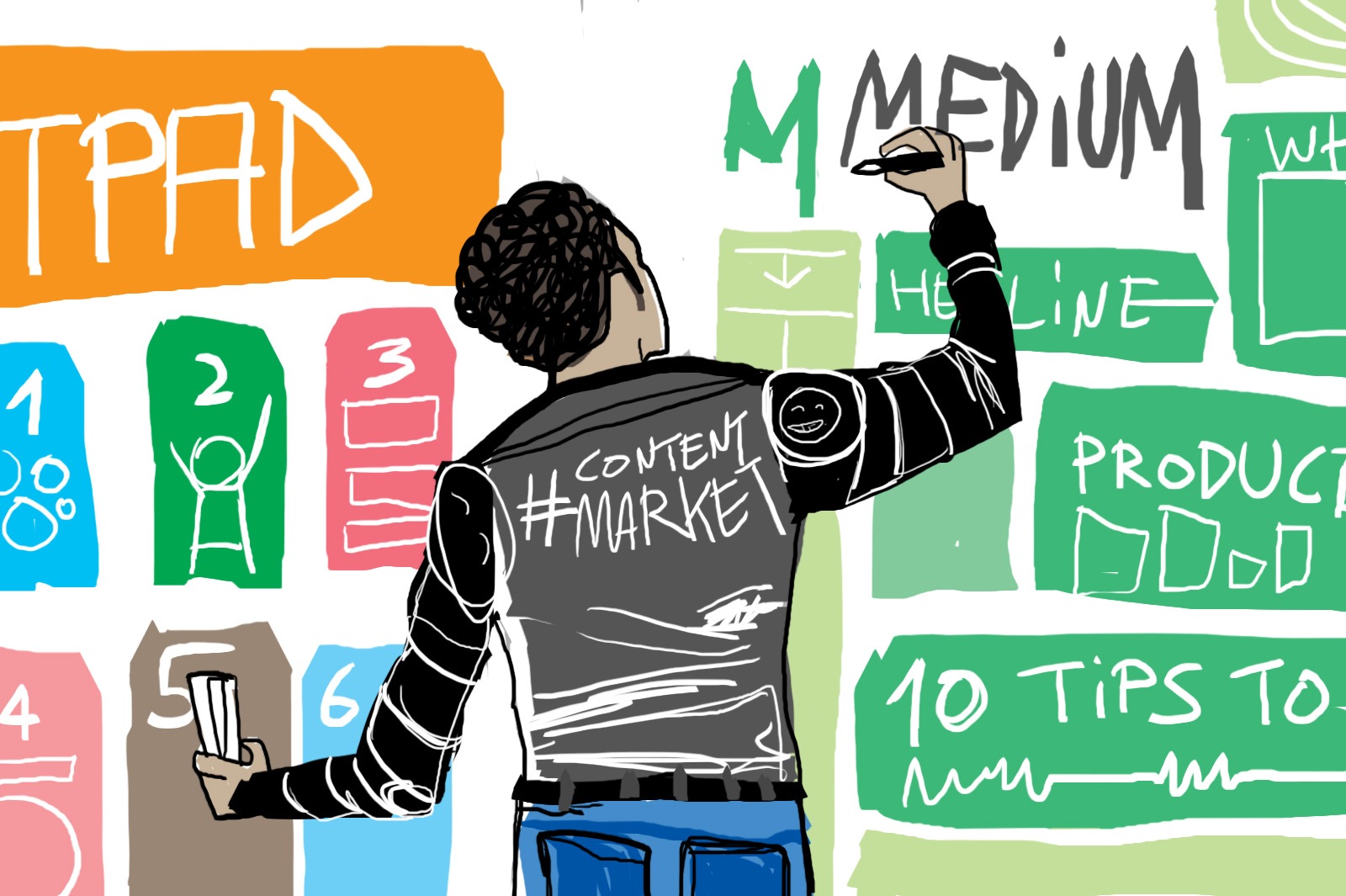
By Mars Dorian, {grow} Contributing Columnist
Back in the heyday of blogging, the rules were simple:
Build your self-hosted website, produce high-quality posts regularly, and use social media like Facebook and Twitter to spread your content. It required hard work in the form butt-muscle training and keyboard finger massages, but it was simple.
Without sounding like a Get-Off-My-Lawn old fart, the power of personal sites and networks is shifting. The separation between content sites (e.g. your blog, an online magazine) and social media networks is vanishing.
Below, I want to share some prominent examples illustrating the shift of content creation and sharing:
Content sites & social networks are merging
Content creation platforms have now become their own social media networks, making “traditional” social media networks like Twitter and Facebook a bonus instead of an essential strategy.
Let me explain. Your website or company site used to be the content marketing hub. Social networks would be added as a boost to spread your content and connect with fans, clients, and peers. I remember the days (sniff) when I counted tweets and Facebook shares on my articles. Oh my.
Let me show you the “new” content world via my preferred platforms:
Medium is an online publishing platform for voracious non-fiction readers. Whether you want to learn start-up tips, boost your productivity, or learn about personal experiences, Medium features it all. Even though I’ve only released a few articles, I’ve attracted over a thousand followers, mostly from Medium’s built-in audience.
The more interesting point is Medium’s built-in virality. The platform uses a “clap” option to tell its algorithms which content is more important. When you tap “clap,” you approve the article and help it spread. If you keep holding the button, you can give more than one clap—up to fifty per article, indicating how much you LOVE the article. So if your post attracts a hundred claps, it could mean a hundred readers clapped your article once, or two readers clapped you each 50 times!
 The second example is Wattpad. It’s a (genre) fiction platform AND a social media network, where you can publish your serialized work in chapters.
The second example is Wattpad. It’s a (genre) fiction platform AND a social media network, where you can publish your serialized work in chapters.
If you like a chapter, you can tap “vote” to praise, increasing the chance for other readers to find it. The more you engage in Wattpad communities (commenting and voting for other writer’s work), the higher chances of your work getting seen and voted for. It’s not a content site with sharing functions, it’s a sharing site with content functions.
Both platforms share one major similarity: they have their built-in community and sharing mechanism, ensuring reach without the use of external social media.
Think about that.
Your content can virally spread and attract a huge audience on each platform, without EVER having to boost your work with a traditional social media platform.
Understanding each platform’s audience
Each content platform attracts a certain type of user. Understanding them determines whether your content will grow or go. Thankfully, you can always adapt your strategy. Let me explain the differences via my current content platforms:
Wattpad users want to be entertained. You can publish work riddled with mistakes and even terrible writing as long as it provides ‘fun’. Heck, I’ve once read a dystopian love story where the only freaky thing was the absence of grammar. And yet, the story had amassed a huge audience, showcased by the insane number of votes.
If your story’s entertaining, readers forgive your mistake mania, as long as the chapters remain readable.
Medium focuses on well-written non-fiction content catering to a niche-specific audience. Their audience wants to learn. It matters more to write high-quality, keyword-focused niche content than to be entertaining, even though that helps.
Of course, there are many more social media content platforms, but you get the gist.
The time of producing a piece of content and then using networks to spread them are over for good. Today, your content has to cater to each platform to “trigger” its specific audience.
Yes, it means you have to do more work, but no one said it was easy. As we say in German, more choices mean more agony.
What is your platform-specific purpose?
Not in an existential Why-Are-You-Here kind of way. I mean a strategic purpose.
Ask yourself—what is the goal of your article?
When I write for Medium, I want to attract new e-mail subscribers and non-fiction followers who are interested in writing and self-publishing.
Wattpad is a testing ground where I share my unedited works to get story feedback and maybe readers for my (upcoming) books.
Regardless of the content platform you use, know your purpose and adjust your call-to-action at the end of the article. Do you want more subscribers? Clients? Customers? Feedback? Then add one of these C2A’s to each chapter and/or article. See what happens and then adapt.
Conclusion
Because the rules of content are changing so faaast, you have to constantly change your thinking.
If you want to learn about a content marketing platform you know little about, look up its most popular content pieces, usually featured on the homepage. Look how their top creators format and write their article. The best ones use a platform-proven system. Then pay attention to their call-to-action.
They will tell you the basics so you can start right away with your ‘new’ content marketing.
 Mars Dorian is an illustrating designer and storyteller. He crafts words and pictures that help clients stand out online and reach their customers. You can find his homebase at www.marsdorian.com and connect with him on Twitter @marsdorian.
Mars Dorian is an illustrating designer and storyteller. He crafts words and pictures that help clients stand out online and reach their customers. You can find his homebase at www.marsdorian.com and connect with him on Twitter @marsdorian.
Original illustration by the author.


